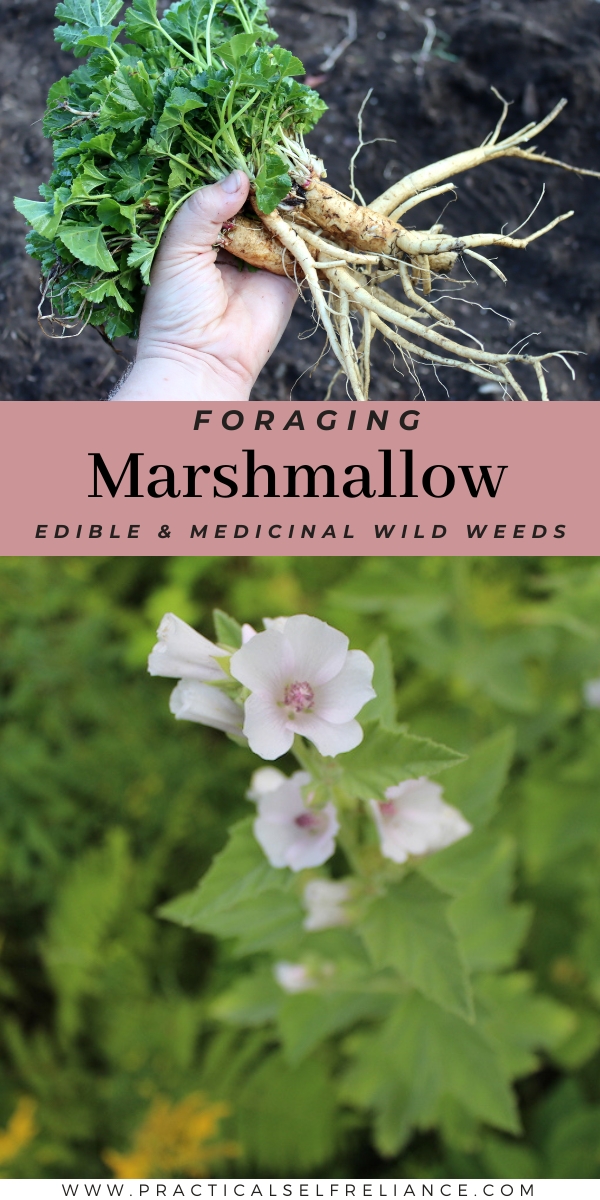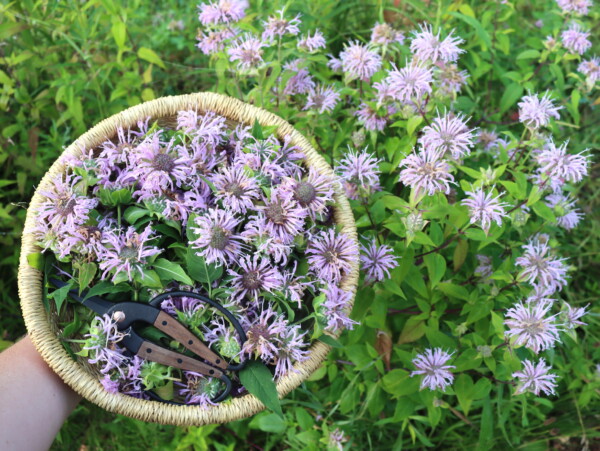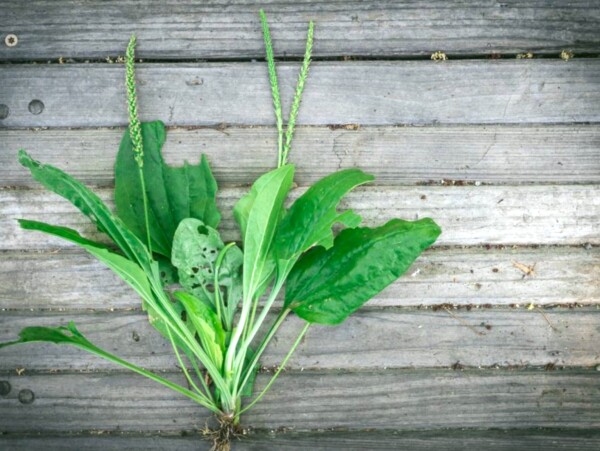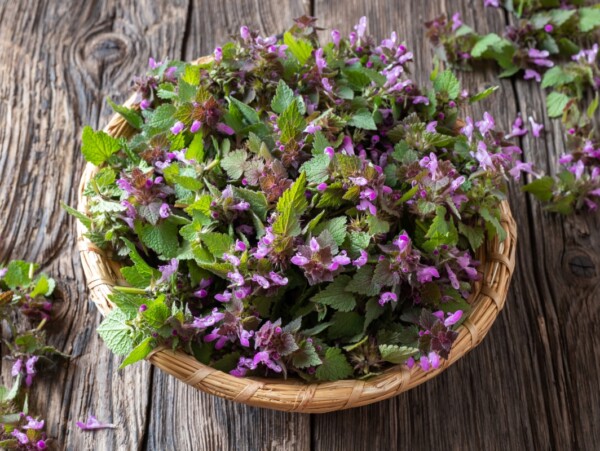Affiliate disclosure: This post may contain affiliate links. Please see our Privacy Policy.
Marshmallow Plants (Althea sp.) are common, easy to identify edible and medicinal wild plants that grow all over the world. They prefer areas with consistent moisture and even a bit of shade, and their herbal properties are similarly cooling and moist, perfect for soothing sore throats, coughs, and other similar issues. And, the leaves are also a tasty salad green, too!
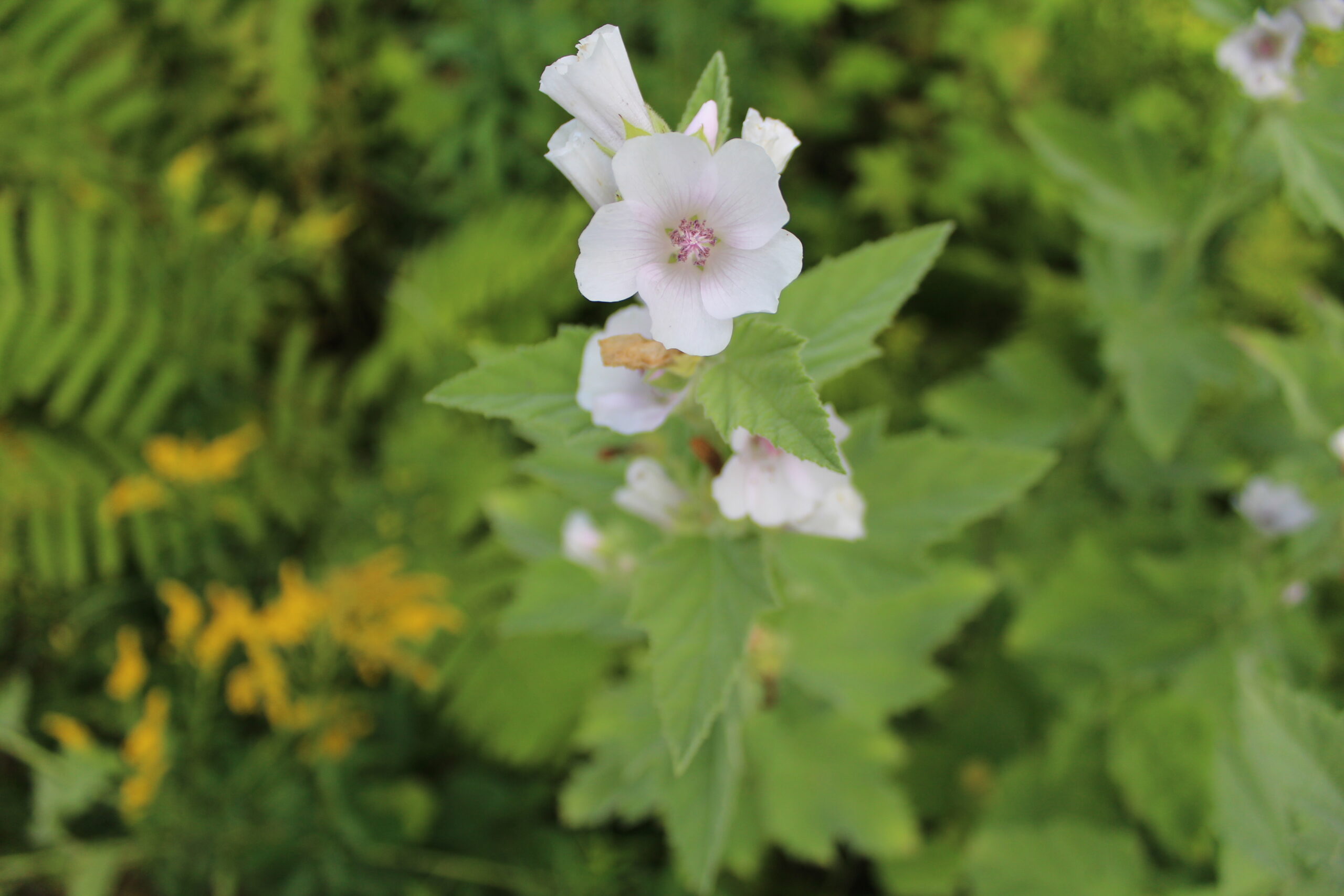
I bet you can imagine the look on my 6 year old’s face when I told her that marshmallows grow in the yard. Yup, real live marshmallow plants.
Or, more accurately, the soothing medicinal plant that was used historically to both flavor and set marshmallows…
These days, marshmallows are little more than whipped corn syrup blobs, but historically, they were a delicious (and throat-soothing) way to take your herbal medicine. Namely, a candy lozenge made from, you guessed it…. marshmallows.
You can, in fact, make real marshmallows with marshmallow root, but you can also make this glorious plant into teas, tinctures and infusions for medicinal use.
The leaves of marshmallow plants are a delicious green, either raw or cooked, and the flowers are edible, too!
You can grow marshmallow plants in your garden for added beauty, or you can forage them in the wild. Either way, they’re beautiful, tasty and really useful all around.
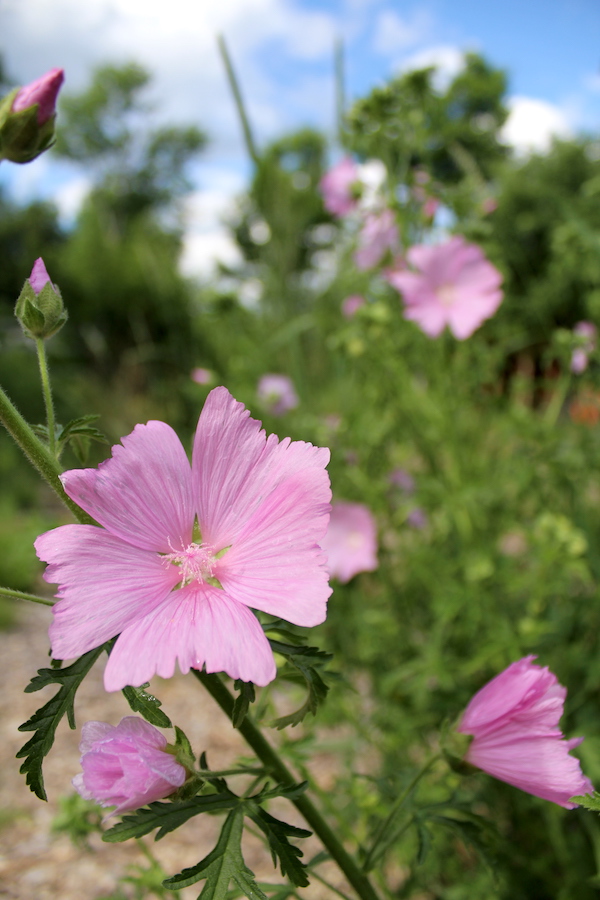
What is Marshmallow?
The Althea genus is a group of herbaceous perennial weeds in the Malvaceae or Mallow family. Marshmallow (Althea officinalis) is one of this group’s best-known and most widely used plants. However, depending on where you live, you may spot other species like Russian Marshmallow (Althea armeniaca) or Palm-leaved Marshmallow (Althea cannabina). You may even grow a few, like Hollyhocks (Althea rosea), in your flower beds.
You may also hear Marshmallow (Althea officinalis) or other Althea species called Smart Weed, Mortification Root, Common Marshmallow, Mauls, Mallards, Schloss Teai, Cheeses, White Mallow, Mallow, or Wymote.
Marshmallow (Althea officinalis) is native to parts of Europe, Asia, and North Africa, but it has naturalized from people’s gardens in parts of North America and other suitable climates. Russian Marshmallow (Althea armeniaca) is native to Russia, Iran, and Armenia while Palm-leaved Marshmallow (Althea cannabina) grows wild in parts of Europe, Asia, the Mediterranean, and North Africa. Hollyhocks (Althea rosea) are native to southwestern China but can now grow in flower gardens worldwide.
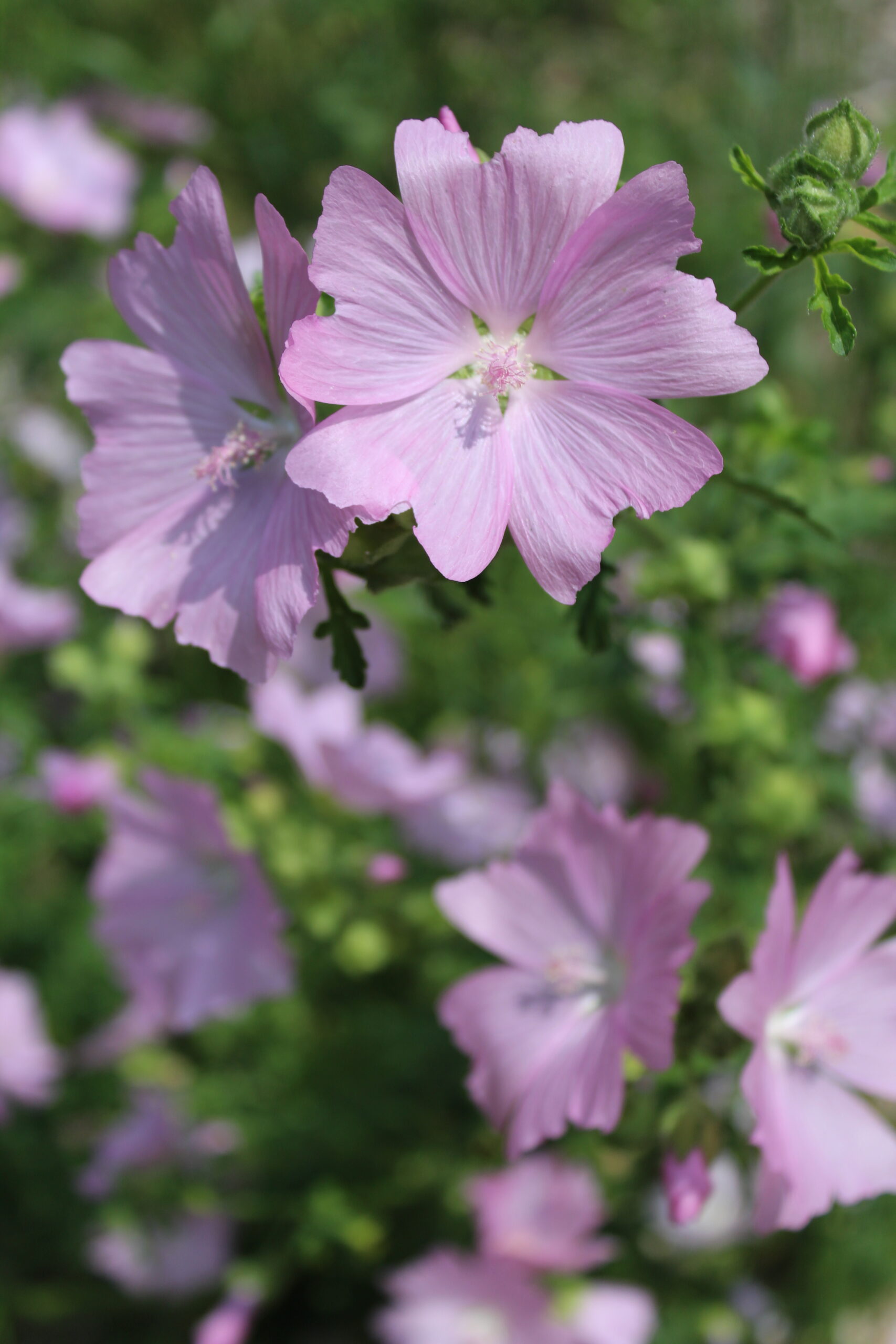
Is Marshmallow Edible?
As you may have guessed, Marshmallow is edible, and people traditionally used the roots of this plant to make its namesake fluffy, white confections, marshmallows. It’s not just the roots that are good, though. The entire Marshmallow plant, including the seeds, leaves, young stalks, flowers, and roots, is safe to eat raw or cooked.
Herbalists of the past and modern times have also put the Marshmallow plant to good use. Marshmallow is safe to use in internal and external preparations. Most herbalists agree that Hollyhocks (Althea rosea) have the same properties and are safe for herbal use. However, their roots are much tougher and fibrous so they may be less desirable.
While humans can safely enjoy Marshmallow, it is toxic to some livestock, including cattle, horses, and sheep, especially in large quantities. Typically, these animals seem to find the plant unpalatable and will leave Marshmallow if other options are available.
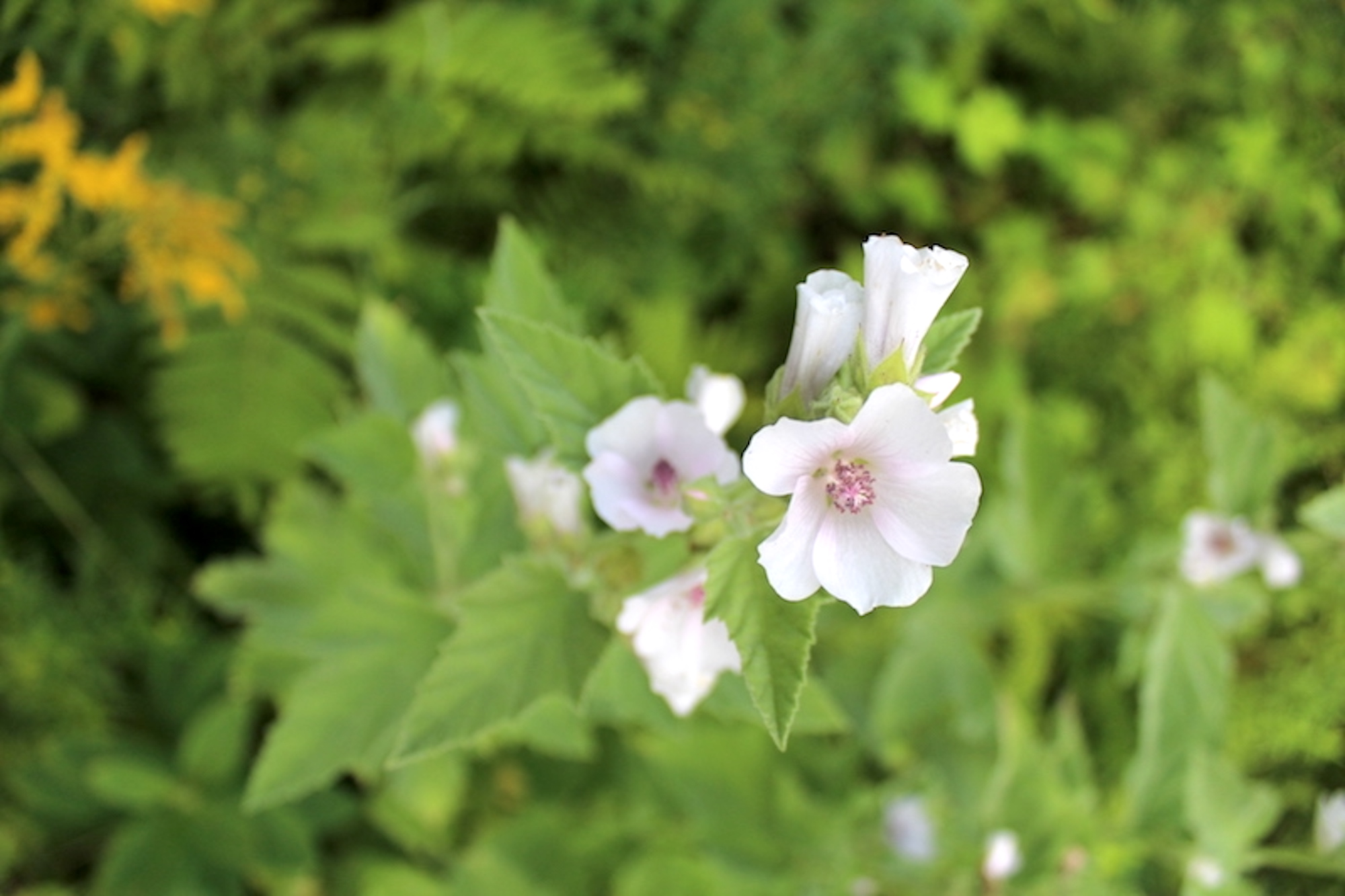
Marshmallow Medicinal Benefits
Herbalists have used Marshmallow (Althea officinalis) and other Althea species for centuries, mainly focusing on the plant’s mucilaginous roots. In fact, the name Althea comes from the Greek ἀλθαίνειν (althainein) meaning “to heal.” The name officinalis also comes from herbalism and is the medieval Latin epithet denoting organisms that had culinary or medicinal value. It translates to “from the officina.” An “officina” was a building in medieval monasteries typically attached to an herb garden where monks would make herbal preparations.
Roman herbalists used Marshmallow, too, possibly learning from ancient Greek medicine. Pliny the Elder, a Roman author and naturalist, wrote, “Hippocrates, [a Greek physician], gave to drink a decoction of its root-juice to wounded people thirsty because of blood loss, and [applied] the mallow leaf itself onto wounds with honey and resin; similarly onto contusions, luxations and swellings; and he applied it as above onto muscles, sinews and joints; he gave it to drink in wine to people suffering from spasms or dysentery.”
The Ancient Egyptians also used Marshmallow medicinally, using the mucilaginous roots to treat sore throats, chest pains, coughs, and to help ease inflammation. They were also probably the first to make any sort of marshmallow-like confection by mixing the ground roots with honey and sugar until thickened. However, those treats were probably reserved for the upper-class members of society.
Modern research has often aligned with herbalists’ traditional use of Marshmallow for treating coughs and respiratory issues. In a 2020 study from Complementary Medicine Research Marshmallow extract alone was found to be effective at treating dry coughs. Combined with other herbs like ginger (Zingiber officinalis), it effectively treats all kinds of coughs.
Herbalists through the ages have also reached for Marshmallow for treating skin issues and wounds. A study on mice focused on the traditional Iranian use of Marshmallow for burns found that Marshmallow extract accelerated the healing of second-degree burns on mice. Another 2020 study found that Marshmallow ointment may be more effective than hydrocortisone ointment in treating atopic dermatitis in children, and there’s some evidence that the polysaccharide mucilage found in Marshmallow’s roots may help treat sore, dry, cracked nipples associated with breastfeeding.
In an older 2011 study from Pharmaceutical Biology, researchers focused on Marshmallow flowers rather than the roots that have primarily been the focus of modern research. This study found that regularly taking Marshmallow flower extract positively affected high-density lipoprotein (HDL) levels, which supports heart health.
Overall, modern research has indicated that Marshmallow has significant beneficial properties. A 2011 review noted that research indicates Marshmallow (Althea officinalis) has “significant pharmacological activity in the cough, irritation of the throat, gastric inflammation, anti-tumor, antiviral and immunostimulant” as well as anti-bacterial and anti-inflammatory activities.
Where to Find Marshmallow
Marshmallow (Althea officinalis) and other Althea species, are native to parts of Europe, Asia, and North Africa. Today, you can find Marshmallow (Althea officinalis) growing wild in some suitable places, like North America, where it has naturalized after being introduced by gardeners and herbalists. Marshmallow (Althea officinalis) and Hollyhocks (Althea rosea) are also easy to grow in the garden, so you may find neighbors with them or see them flourishing at abandoned homesites.
As the name Marshmallow suggests, these plants grow in wet areas. They thrive in full sun but will tolerate partial shade. However, they tend to get leggy in shady spots.
You may find them in ditches, streambanks, swamp margins, brackish wetlands, and other open or disturbed wet areas. Even most ornamental Hollyhock (Althea rosea) cultivars require consistently moist soil to thrive.
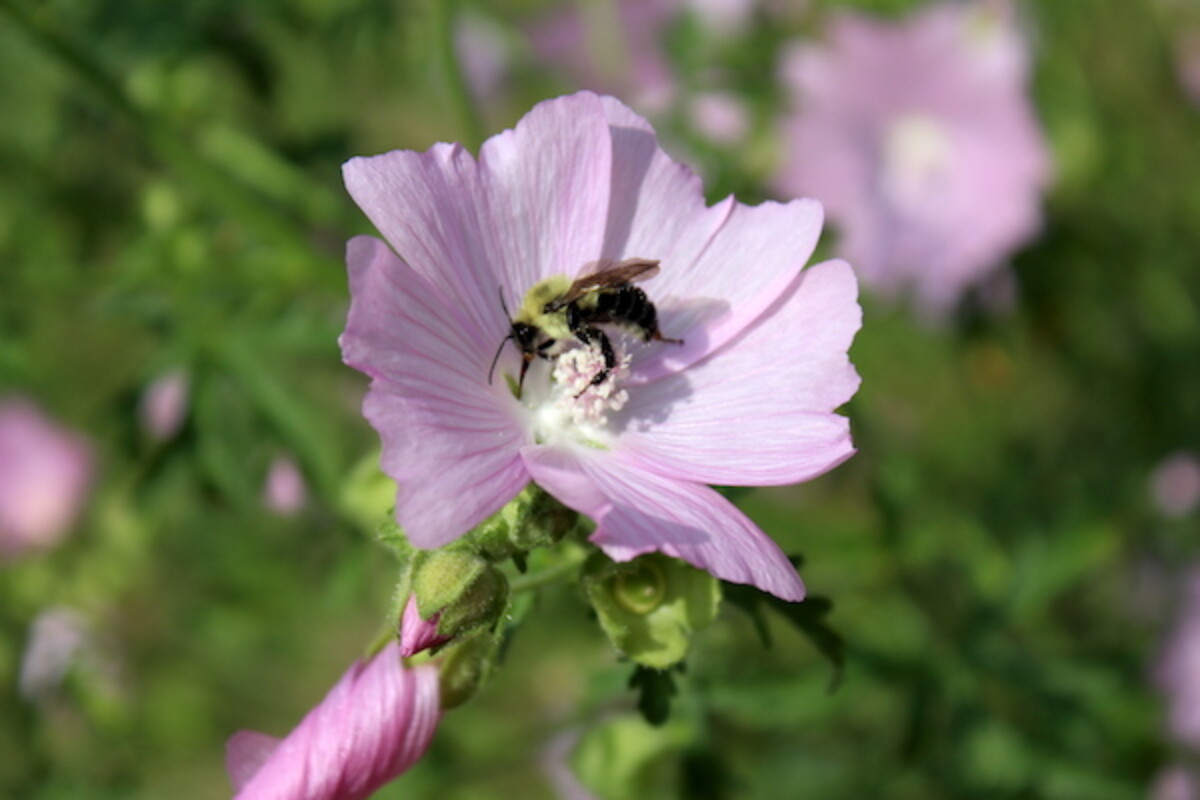
When to Find Marshmallow
Marshmallow plants die back each fall but return in early spring. Spring is an ideal time to harvest the tender young shoots and leaves as a vegetable or for medicinal infusions.
In its native range and many other areas, Marshmallow usually blooms between August and September. However, it may bloom earlier or later depending on your climate. This period is a great time to mark patches of Marshmallow for later or to harvest some of the flower buds and blooms which you can use in culinary and medicinal preparations.
Marking plants is a good idea because you want to wait until they die back in the fall to harvest the roots. This time of year, the plants have returned all their nutrients to their roots and converted some of their starches to sugar. It’s also an ideal time for harvest because the plants are dormant, and harvesting just some of the roots shouldn’t kill the plant.
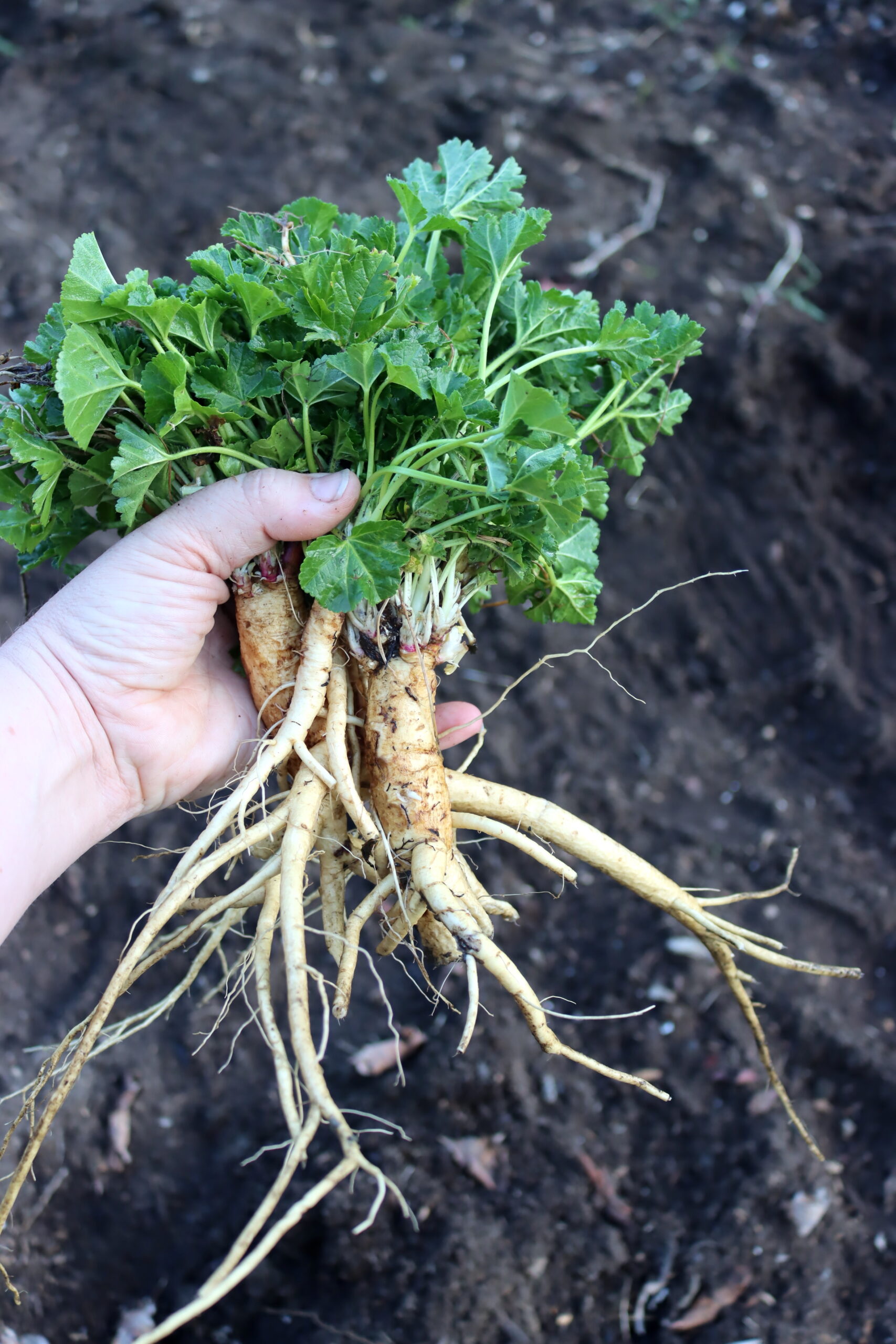
Identifying Marshmallow
These tall, narrow herbs are generally easiest to spot when blooming. Their showy, pale pink or white flowers look a bit like hibiscus or hollyhock flowers, giving them an almost tropical appearance. When they’re not in bloom, their velvety leaves and stem, and wetland habitat can also help you pick them out.
Marshmallow Leaves
Marshmallows have alternate green leaves that are fuzzy or velvety on their upper and lower surfaces.
Their leaf shape is somewhat variable. Generally, they are heart-shaped, ovate, or almost triangular. The leaves have toothed margins and usually have 3 to 5 lobes. The leaves’ size is also variable but typically they reach up to 4 inches long and 3 inches wide.
Some species, like Russian Marshmallow (Althea armeniaca), also have leaves that vary more significantly. Russian Marshmallow’s leaves tend to be deeply divided into three ovate or lanceolate lobes.
Marshmallow Stems
Marshmallow stems have a fuzzy covering like the leaves, though it may be less pronounced than on the leaves. The stems are rigid and upright, occasionally growing up to 6 feet tall. Usually, they’re largely unbranched, but depending on the environment, they can become highly branched and spread up to 4 feet wide.
Marshmallow Flowers
Marshmallow usually blooms in mid-summer to early fall. They produce pale pink or white blooms singly or in small clusters from the leaf axils near the top of the stalk. The flowers are usually about 1.5 inches wide and have five petals and a purple tube of fused stamens.
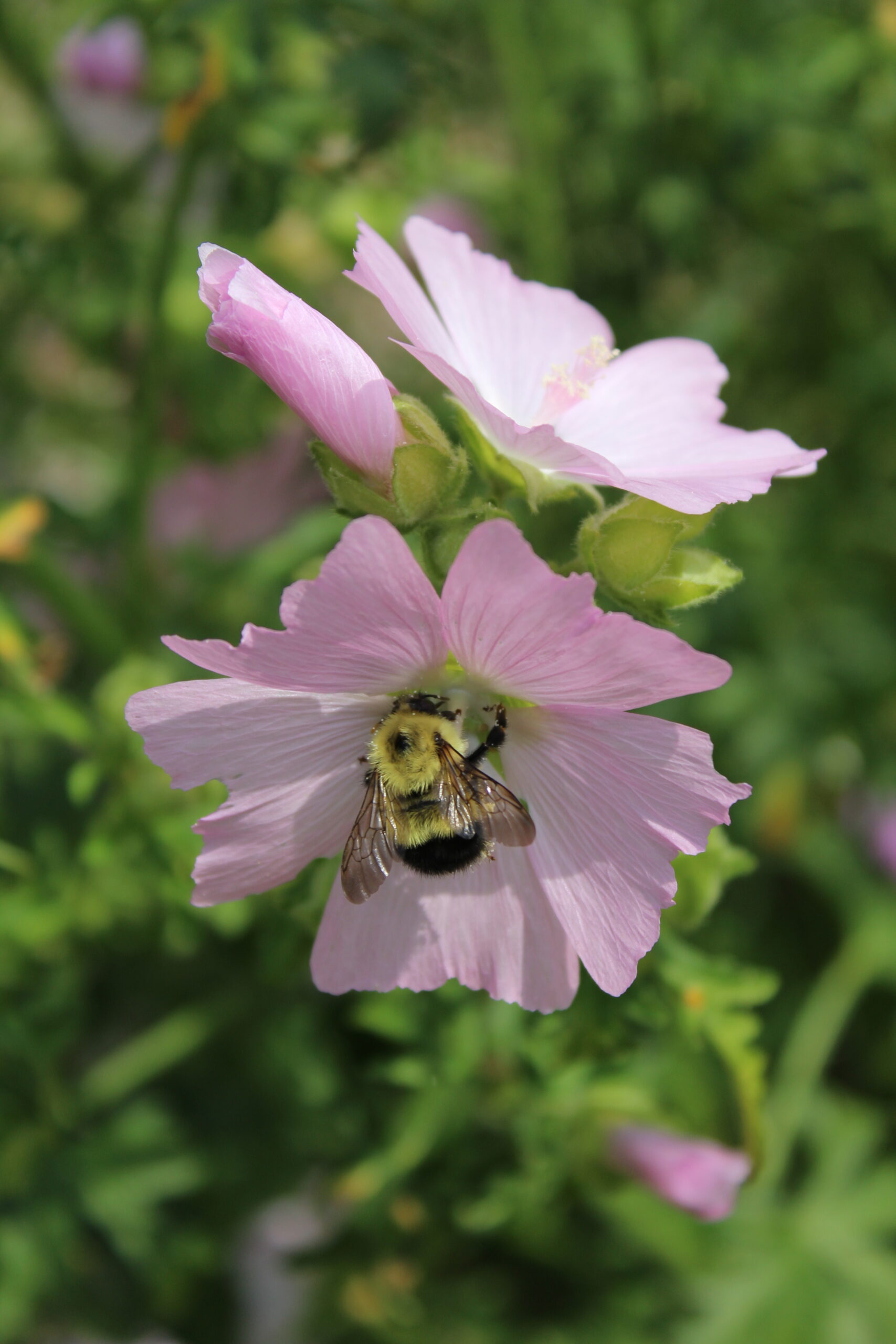
Marshmallow Seeds
The flowers are followed by flat, round fruit, a type of schizocarp sometimes called “cheeses.” These schizocarps are generally less than ½ inch wide and divide into 20 kidney-shaped seeds called mericarps.
Marshmallow Roots
Marshmallow has thick, long, tapering, perennial roots. These roots are tough and pliant. They are generally yellowish on the outside and white and fibrous on the inside.
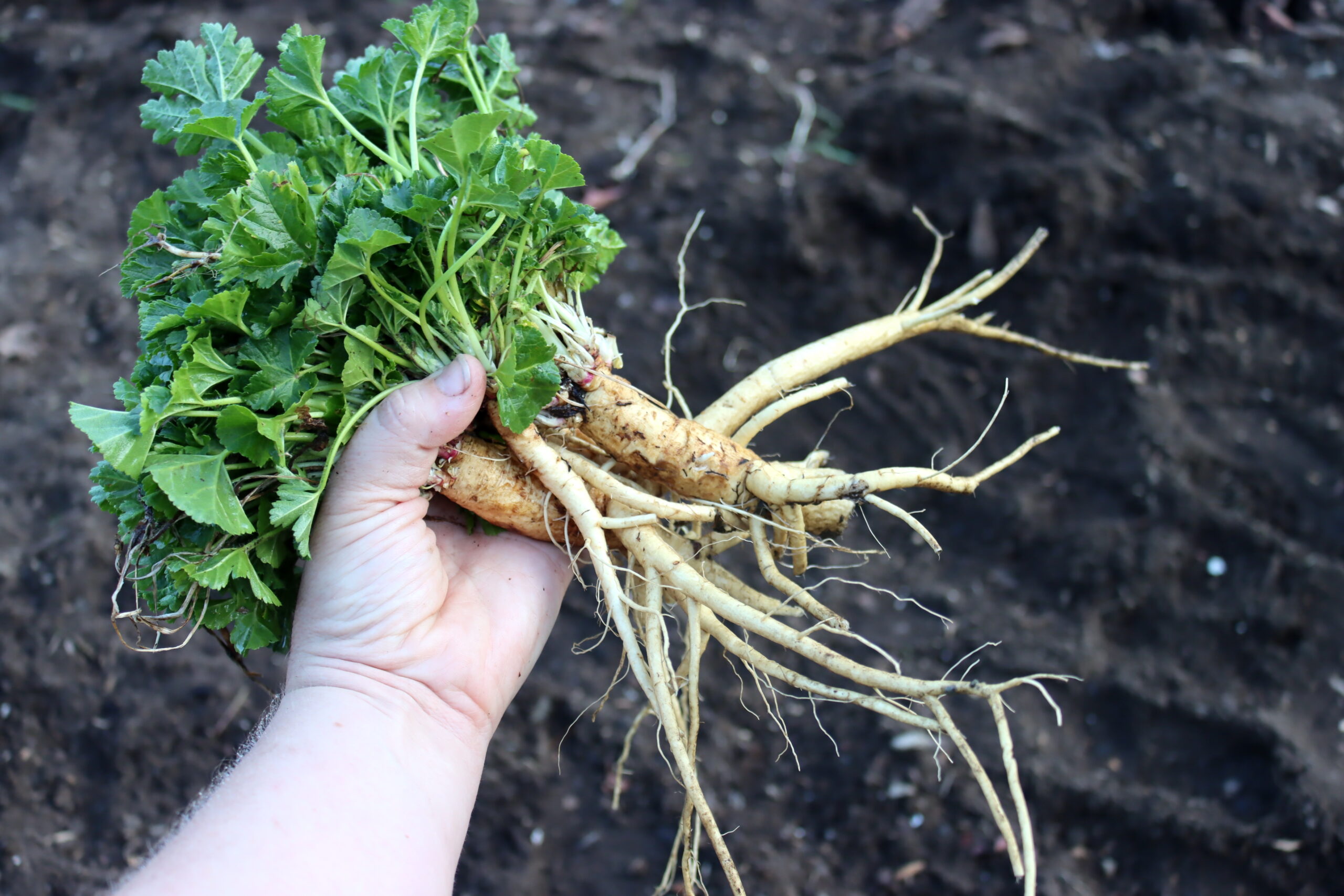
Marshmallow Look-Alikes
Marshmallow is sometimes confused with the similarly named Swamp Rose Mallow (Hibiscus moscheutos). However, Swamp Rose Mallow differs in a few easy-to-spot ways:
- A single Swamp Rose Mallow plant typically has multiple sturdy, woody stems.
- Swamp Rose Mallow leaves have a greenish-gray upper surface and a downy, white underside.
- Swamp Rose Mallow flowers are large, up to 8 inches wide.
- Swamp Rose Mallow seed capsules are 1 to 1.25 inches long, oval, and short-beaked.
Another Marshmallow lookalike is Seashore Mallow (Kosteletzkya virginica). However, it also has a few noticeable differences.
- Seashore Mallow flowers are usually 1 ½ to 2 ½ inches wide.
- Seashore Mallow flowers have tubes of fused yellow stamens at the centers.
- Seashore Mallow generally doesn’t grow taller than 3 feet.
Lastly, Marshmallow is commonly mistaken for Musk Mallow (Malva moschata). Musk Mallow is distinguished in the following ways:
- Musk Mallow generally only grows 8 inches to 2 feet tall.
- Musk Mallow leaves are palmately divided into very narrow-toothed lobes.
- Musk Mallow flowers have a musky fragrance.
- Musk Mallow prefers dry, fertile soils in disturbed areas.
Ways to Use Marshmallow
People have used Marshmallow in herbal and culinary creations worldwide for hundreds of years. If you find or grow some of these incredible plants, there are many ways to put them to good use.
While modern, commercial marshmallows no longer contain the Marshmallow roots they were named for, they are still used by home cooks to make marshmallows and other confections like the sweet, Persian halva or the French pâte de guimauve, an egg-white meringue made with Marshmallow and rosewater. Making your own marshmallows with this helpful herbal ally is easier than you’d think and much healthier than the store-bought versions!
This herb isn’t just for treats, though. The young stalks, leaves, flower buds, flowers, and seeds are all safe to eat raw or cooked. They make excellent additions to salads or you can saute them with other vegetables.
The roots, in particular, have mucilage much like Prickly Pear Cactuses or Okra, which you may be more familiar with. This mucilage is a key part of their healing power but can be odd in meals if you’re unaccustomed to foods like this. Historically, people at the roots as a cooked vegetable, and you could use them to help thicken soups or stews.
It’s also easy to reap Marshmallow’s herbal benefits. Many herbalists like to use a combination of the leaves and roots to make infusions and extracts. You can also use Marshmallow in other sore throat remedies like syrups or lozenges.
Note that some of Marshmallow’s soothing properties come from compounds called mucopolysaccharides. Unfortunately, heat destroys these, so it’s best to use room-temperature water to create Marshmallow decoctions and low-alcohol extractions when making marshmallow tincture.
You can also use the plant’s soothing power externally on irritations, minor burns, scratches, and cuts. Try making a simple poultice with crushed leaves or incorporating leaves and roots into ointments and salves.
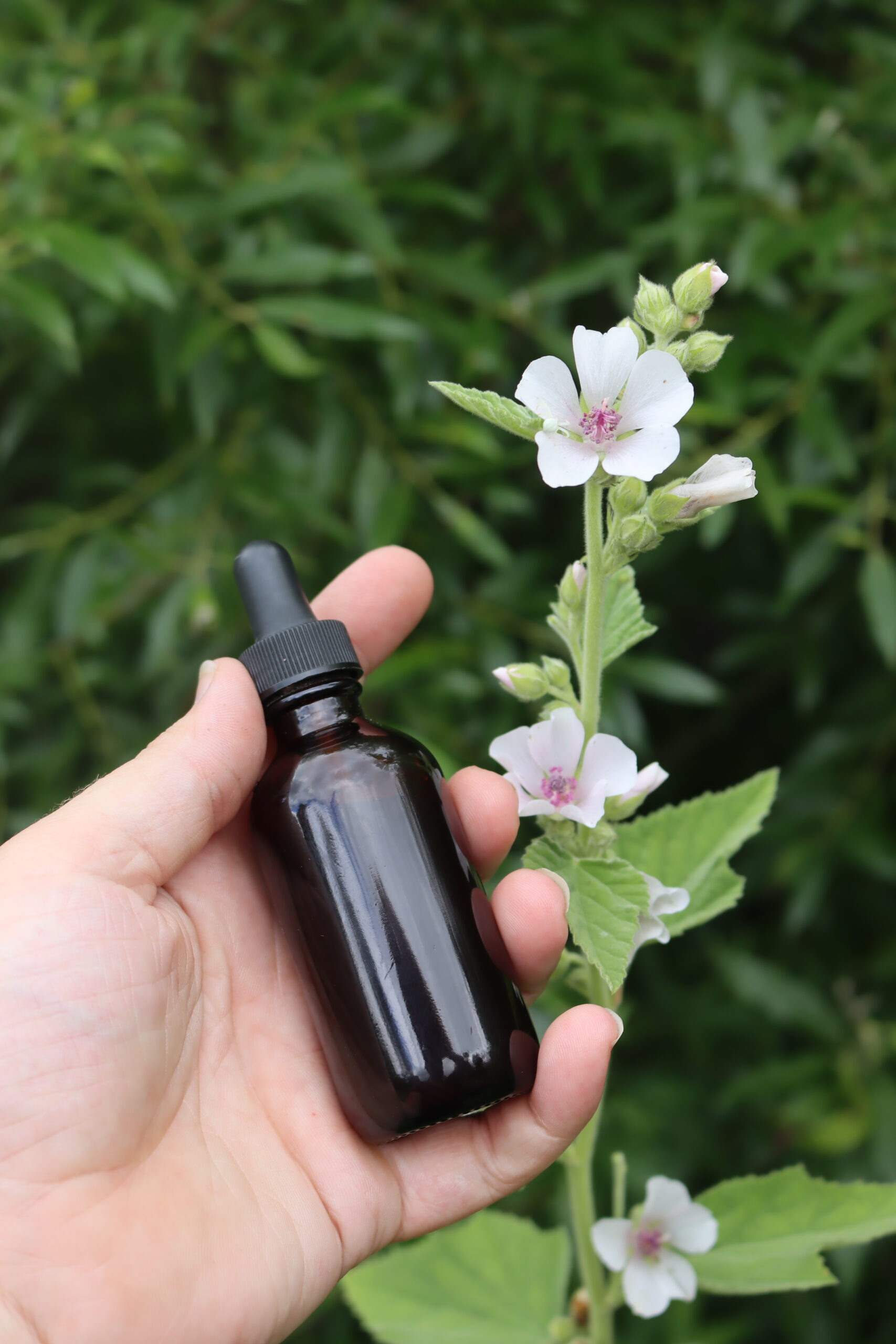
Marshmallow Recipes
- Test out your own real marshmallows made with honey and Marshmallow root powder with this Homemade Marshmallow recipe from Grow Forage Cook Ferment.
- If you prefer to avoid gelatin, this Homemade Vegan Marshmallow recipe from Oola still uses real Marshmallow root powder but is suitable for vegans and vegetarians.
- Get the soothing benefits of Marshmallow quickly with this simple Marshmallow Tea recipe from Mountain Rose Herbs. It’s excellent for soothing irritated mouths, throats, and stomachs!
- Put some of Marshmallow’s skin soothing properties to the test with this Nourishing Marshmallow Skin Cream recipe from Lovely Greens.
- For a nutritious, on-the-go herbal snack, try this recipe for Herbal Energy Bites from The Refreshing Point.
- Soothe sore throats naturally with this Herbal Lozenge recipe from Ginger Tonic Botanicals.
- Breastfeeding moms may also benefit from this Natural Chapped Breastfeeding Salve recipe.
